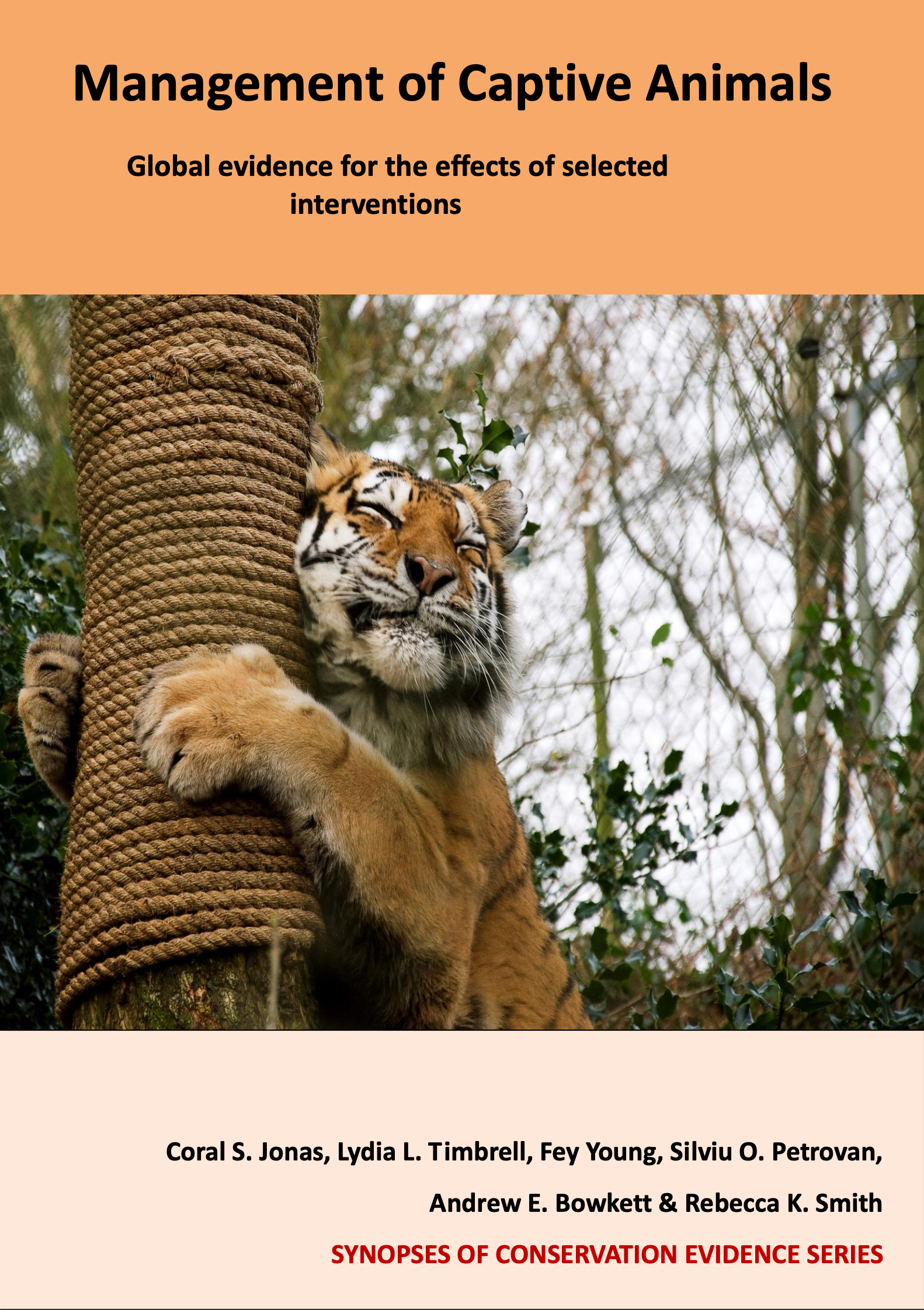Primates: Hide food in containers (including boxes and bags)
-
Overall effectiveness category Likely to be beneficial
-
Number of studies: 2
View assessment score
Hide assessment score
How is the evidence assessed?
-
Effectiveness
75% -
Certainty
50% -
Harms
0%
Study locations
Supporting evidence from individual studies
A before-and-after study in 2009 in Ireland (Wells & Irwin, 2009) found that when food was presented in food filled baskets or presented in tubes foraging of moloch gibbons Hylobates moloch increased and time spent outside the indoor enclosure increased compared to when fresh fruit and vegetables were presented in one place. With the food filled baskets significantly more instances of being outside and number of times gibbons were seen foraging were recorded when food filled baskets were presented (times outside: 106; times foraging: 44) compared to when fruit and vegetables were offered alone (times outside: 96; times foraging: 20). With the tubes significantly more instances of being outside and the number of times gibbons were seen foraging were recorded when food filled tubes were presented (times outside: 112; times foraging: 43) compared to when fruit and vegetables were offered alone (times outside: 96; times foraging: 20). A group of gibbons was presented with food in baskets or tubes for five days, with three baskets or tubes suspended within the animal exhibit each time. The gibbons’ behaviour was recorded every five minutes for five hours per day for 12 days. (CJ)
Study and other actions tested
Where has this evidence come from?
List of journals searched by synopsis
All the journals searched for all synopses
This Action forms part of the Action Synopsis:
Management of Captive Animals
Management of Captive Animals - Published 2018
Captive Animal Synopsis





)_2023.JPG)














